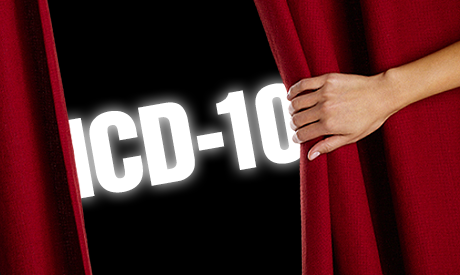ICD-10 Behind the Scenes
The stuff you don’t see…
In previous blog posts we talked a lot about the new ICD-10 diagnosis code conversation set to take place on October 1st, primarily focusing on the things we see- namely documentation and the interpretation of the Patient Care Report documentation in the billing office that turns into a correctly coded claim.
 But today, we’ll take a minute to focus on what is (or should be) going on behind the scenes.
But today, we’ll take a minute to focus on what is (or should be) going on behind the scenes.
Ramp-Up
As we fill this space, we’re just a mere 47 days away from the big day. October 1st is fast approaching. Our billing office has been working for many months on lining up all the pieces that need to be put in place to finalize the ICD-10 puzzle.
It’s now ramp-up time when all those pieces start sliding into place so everything is ready to go come October 1.
Checklist
Many of you will never see all that goes into making a major transition like this happen. Literally, there is a checklist of tasks that need to be completed.
Crosswalk
First on the checklist is enacting a crosswalk. The new codes must be entered into the billing software. While the software company may be of assistance, it really comes down to insuring in the local billing office that the correct codes are in place. In anticipation of the switch, there has to be analysis and discussions with direction coming from payer sources and trusted individuals that know the industry well to make the right choices.
In time, we anticipate that some payer sources will provide guidance on the codes they wish to see along with instruction on how to best support those diagnosis codes when chosen. Our billing office is paying close attention to literally dozens of communications each and every day to be sure that we educate our staff on how to best meet the requirements necessary to insure full compliance with the coding standards.
It’s for this reason that we place great value on requiring that every single Enhanced staff member is Certified Ambulance Coder (CAC™) trained by the National Academy of Ambulance Coding (NAAC®). Plus we also monitor communications from sources such as the American Ambulance Association and various State ambulance associations, as well.
Testing
Some payers will require test claims to be submitted in order to verify that the digital claim information is moving from the local billing office systems to the payer’s claims processing systems in the correct HIPAA-compliant formats.
Our billing office is very connected. Not only do we use the leading EMS billing system vendor to prepare the claims but we also interact with an excellent claims clearinghouse to insure that all of our digital communications are properly and efficiently prepared.
The clearinghouse engine allows for immediate feedback on all electronic claims which minimizes error and insures that the claim is delivered to the payer source correctly the first time.
Even paper billing formats must be tested to insure that the new ICD-10 diagnosis code numbering configurations print correctly on paper claim forms in order to not cause a rejection.
Education
Last, but not least, both billing office staff members and EMS providers must be educated.
Our industry has relied on Version 9, ICD-9 diagnosis coding for as long as any of us who are currently in the business can remember. It’s the system we all were indoctrinated to make happen.
Change is never easy, especially when there are literally many dollars and the success of the nation’s healthcare delivery system, EMS included, riding on those changes. We just recently have learned of EMS agencies whose in-house and outsourced billing agents have not even begun to identify the puzzle pieces, let alone put them together so the end-sum picture is clear.
Plus, we know of EMS agencies who rely on billing offices for crew education opportunities that just aren’t happening. Enhanced has provided continual educational pieces in this space and through other means to insure that our clients’ EMS providers are in the know about what to expect come October.
There’s a right way to do this!
There’s a right way and a wrong way to do this ICD-10 transition. You must choose the right way!
Several years ago our first communications on this subject warned that the procrastinator will lose the edge and potentially cost the EMS system a lot of money.
We are worried that this will happen for many EMS agencies. Hopefully, your EMS agency is one that gets left in the dust! If we can help, call us today!